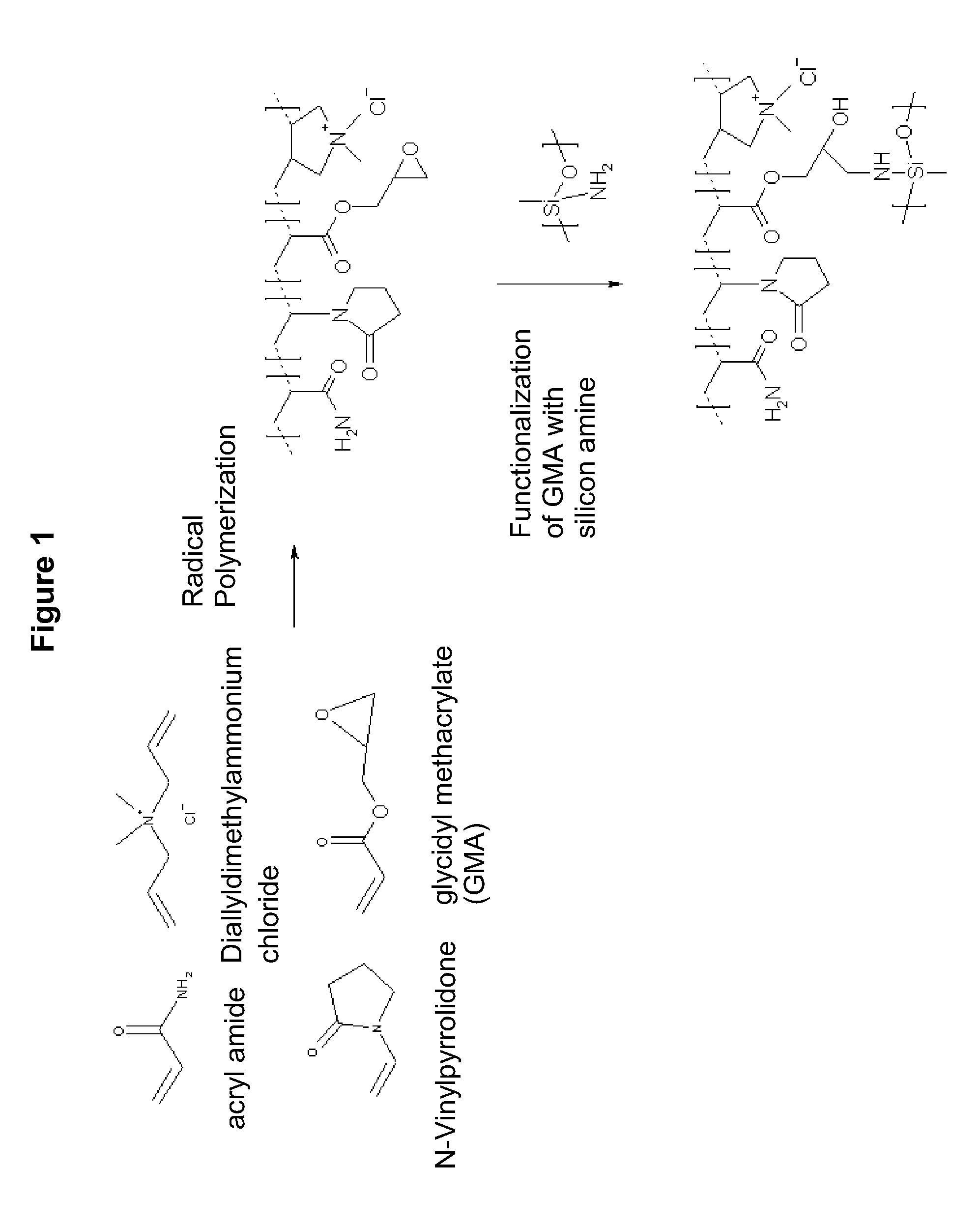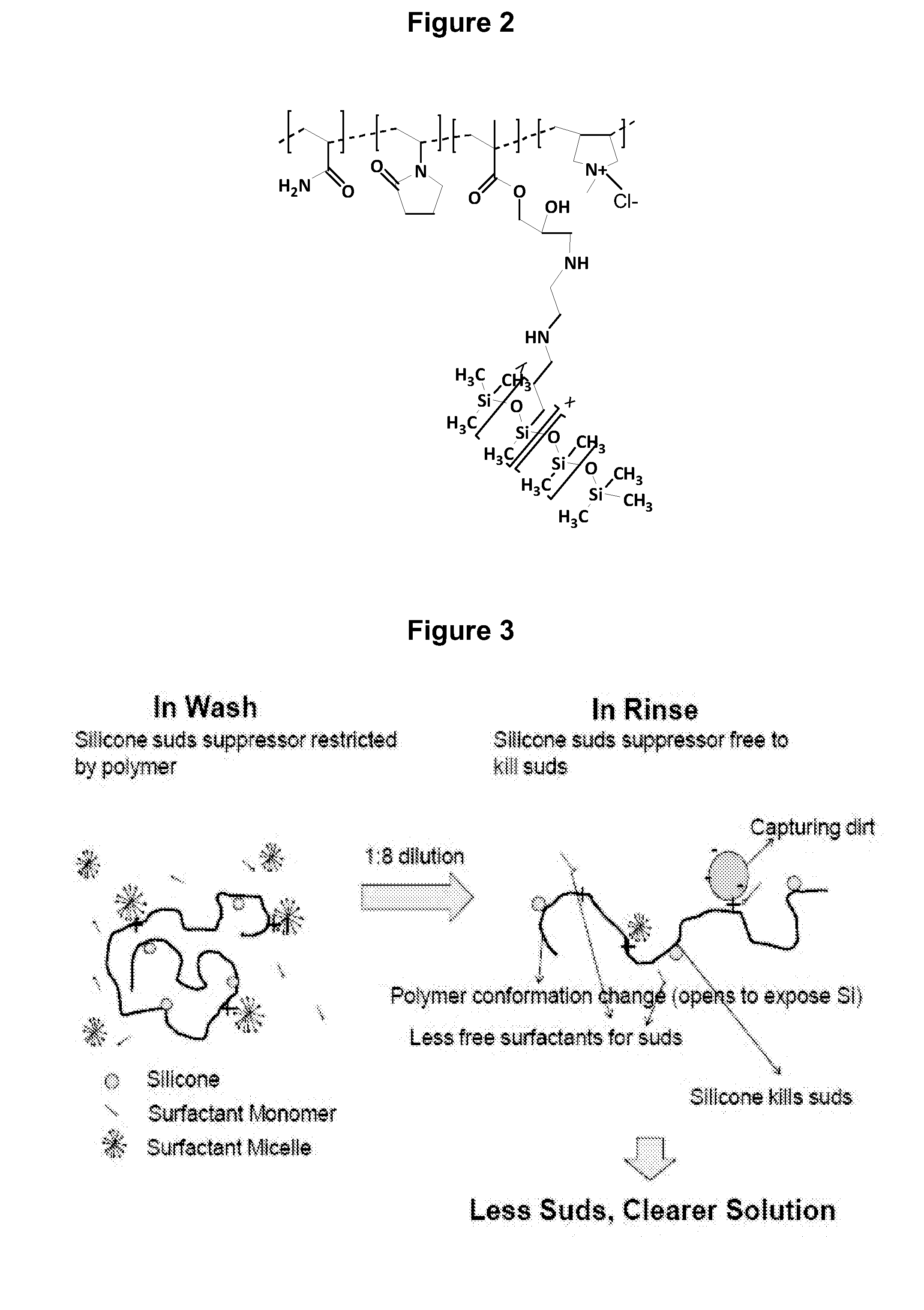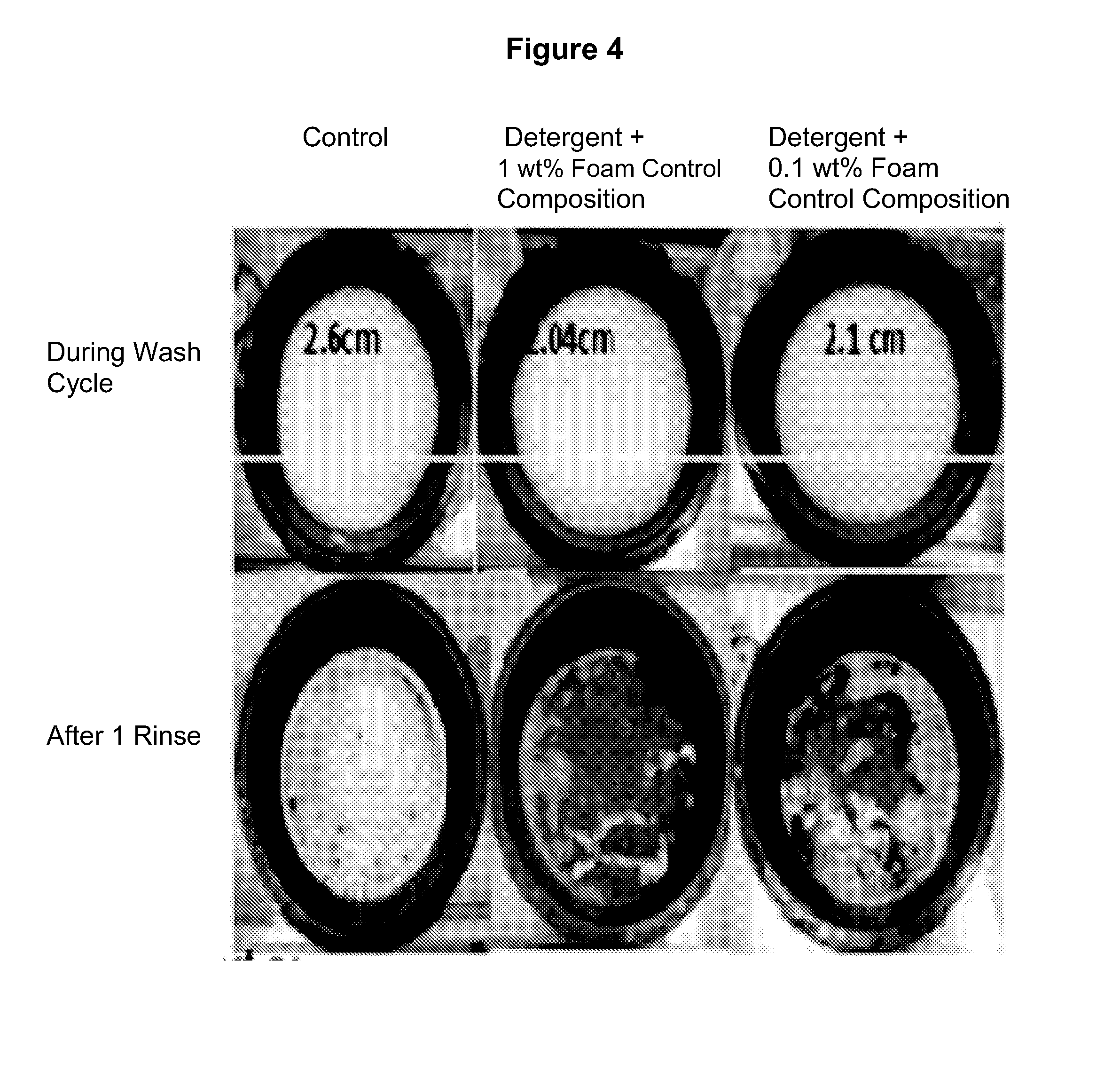Cleaning compositions
a composition and cleaning technology, applied in the field of cleaning compositions, can solve the problems of inability to reduce the effect of reducing the overall suds level, and the perception of the inactiveness of the laundry detergent, etc., and achieves outstanding anti-suds benefits, no or minimal negative effects on cleaning performance, and improved suds removal.
- Summary
- Abstract
- Description
- Claims
- Application Information
AI Technical Summary
Benefits of technology
Problems solved by technology
Method used
Image
Examples
example p1
[0108]In a 4 L stirred vessel, water (1148.8 g), diethylentriaminepentaacetic acid, pentasodium (0.99 g), glycidylmethacrylate (5.19 g), vinylpyrrolidone (5.63 g), acrylamide in water (50%, 50.28 g), and diallyldimethylammonium chloride in water (65%, 96.86 g) were charged and heated to 80° C. under a flow of nitrogen. A solution of sodium persulfate (2.47 g) in water (98.9 g) is added over 4 h. Once the persulfate solution has been fed for 15 min, a solution of glycidylmethacrylate (34.78 g), vinylpyrrolidone (22.52 g), acrylamide in water (50%, 201.14 g), diallyldimethylammonium chloride in water (65%, 387.42 g) and water (357.37 g) are added together in one feed over 2 h and 45 min. The polymerization mixture is kept at this temperature for an additional 1 h after both streams have finished. Subsequently a solution of sodium persulfate (2.47 g) in water (98.83 g) is added over 1 h, the reaction kept at this temperature for 2 h and then left to cool down to room temperature. To th...
example p2
[0109]In a 4 L stirred vessel, water (1128.92 g), diethylentriaminepentaacetic acid, pentasodium (0.99 g), glycidylmethacrylate (7.97 g), acrylamide in water (50%, 127.45 g), and diallyldimethylammonium chloride in water (65%, 41.81 g) were charged and heated to 80° C. under a flow of nitrogen. A solution of sodium persulfate (2.47 g) in water (98.8 g) is added over 4 h. Once the persulfate solution has been fed for 15 min, a solution of glycidylmethacrylate (31.86 g), acrylamide in water (50%, 509.82 g), diallyldimethylammonium chloride in water (65%, 167.25 g) and water (279.78 g) are added together in one feed over 2 h and 45 min. The polymerization mixture is kept at this temperature for an additional 1 h after both streams have finished. Subsequently a solution of sodium persulfate (2.47 g) in water (98.83 g) is added over 1 h, the reaction kept at this temperature for 2 h and then left to cool down to room temperature. To the terpolymer solution the silicon polymer represented...
example p3
[0110]In a 4 L stirred vessel, water (1,152.77 g), diethylentriaminepentaacetic acid, pentasodium (0.99 g), glycidylmethacrylate (4.12 g), acrylamide in water (50%, 15.05 g), and diallyldimethylammonium chloride in water (65%, 134.19 g) were charged and heated to 80° C. under a flow of nitrogen. A solution of sodium persulfate (2.47 g) in water (98.8 g) is added over 4 h. Once the persulfate solution has been fed for 15 min, a solution of glycidylmethacrylate (16.49 g), acrylamide in water (50%, 60.21 g), diallyldimethylammonium chloride in water (65%, 536.75 g) and water (375.28 g) are added together in one feed over 2 h and 45 min. The polymerization mixture is kept at this temperature for an additional 1 h after both streams have finished. Subsequently a solution of sodium persulfate (2.47 g) in water (98.83 g) is added over 1 h, the reaction kept at this temperature for 2 h and then left to cool down to room temperature. To the terpolymer solution the silicon polymer represented...
PUM
 Login to View More
Login to View More Abstract
Description
Claims
Application Information
 Login to View More
Login to View More - R&D
- Intellectual Property
- Life Sciences
- Materials
- Tech Scout
- Unparalleled Data Quality
- Higher Quality Content
- 60% Fewer Hallucinations
Browse by: Latest US Patents, China's latest patents, Technical Efficacy Thesaurus, Application Domain, Technology Topic, Popular Technical Reports.
© 2025 PatSnap. All rights reserved.Legal|Privacy policy|Modern Slavery Act Transparency Statement|Sitemap|About US| Contact US: help@patsnap.com



